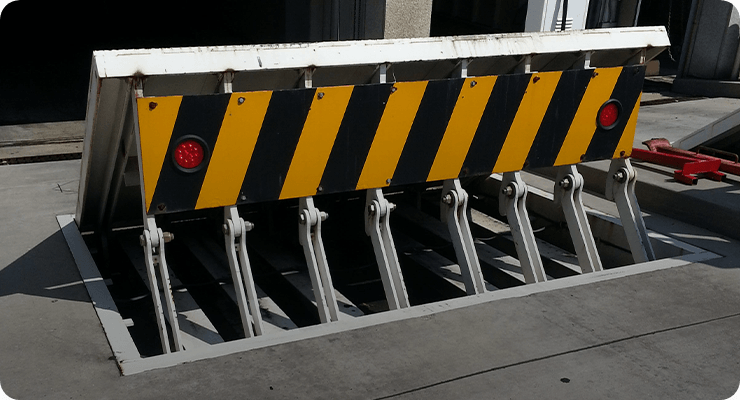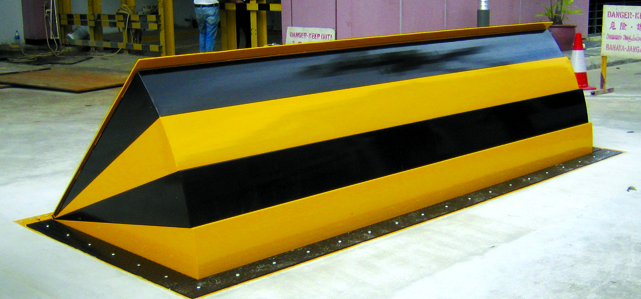Some Known Facts About Wedge Barriers.


18 might be done faster, easily, and price successfully. FIG. In certain embodiments, the anchor 30 might be a steel framework consisting of plates, beam of lights(e. g., I-beams ), and/or various other frameworks that are secured within the structure 14, which may be concrete. At the surface area 12, a top side 28 of the support 30 might go to the very least partly revealed
, thereby allowing the add-on of the obstacle 10 to the anchor 30. g., threaded openings)in one or more beam of lights or plates of the anchor 30 might be revealed to the surface area 12. In this fashion, bolts 32 or other mechanical fasteners might be check this site out made use of to safeguard the barrier 10 to the support 30. As the obstacle 10 is installed to the surface 12 of the foundation 14, collection of debris and various other product beneath the obstacle might be lowered, and parts of the bather 10 may not be exposed to below quality environments. As indicated by recommendation character 52, the training device 50 includes parts disposed below the wedge plate 16. As an example, the elements 52 under the wedge plate 16 may include an electromechanical actuator, a webcam, several web cam surface areas, and so forth. Furthermore, the lifting system 50 includes a spring setting up 54
The spring rod 58 is combined to a cam(e. g., cam 80 revealed in FIG. 4) of the training mechanism 50. The springtimes 60 disposed regarding the springtime rod 58 are kept in compression by springtime sustains 62, including my latest blog post a fixed spring support 64. That is, the fixed springtime assistance 64 is repaired about the foundation 14 and Our site the rest of the bather 10.
The smart Trick of Wedge Barriers That Nobody is Discussing
g., spring assistance 65 )might be taken care of to completion of the spring pole 58 to enable compression of the springs 60. As the springtimes 60 are compressed between the springtime supports 62, the spring assembly 54 creates a pressure acting upon the webcam combined to the spring rod 58 in an instructions 66. As an example, the staying pressure put on
the cam to release the wedge plate 16 may be supplied by an electromechanical actuator 84 or various other actuator. The spring assembly 54 and the actuator 84(e. g., electromechanical actuator)might run together to translate the camera and lift the wedge plate 16.
As pointed out over, in the released setting, the wedge plate 16 serves to block gain access to or travel beyond the barrier 10. The obstacle 10(e. g., the wedge plate 16 )might block pedestrians or cars from accessing a residential property or path. If a vehicle is taking a trip towards the deployed wedge plate 16(e. For instance, in one circumstance, the safety legs 86 might be prolonged duringmaintenance of the barrier 10.